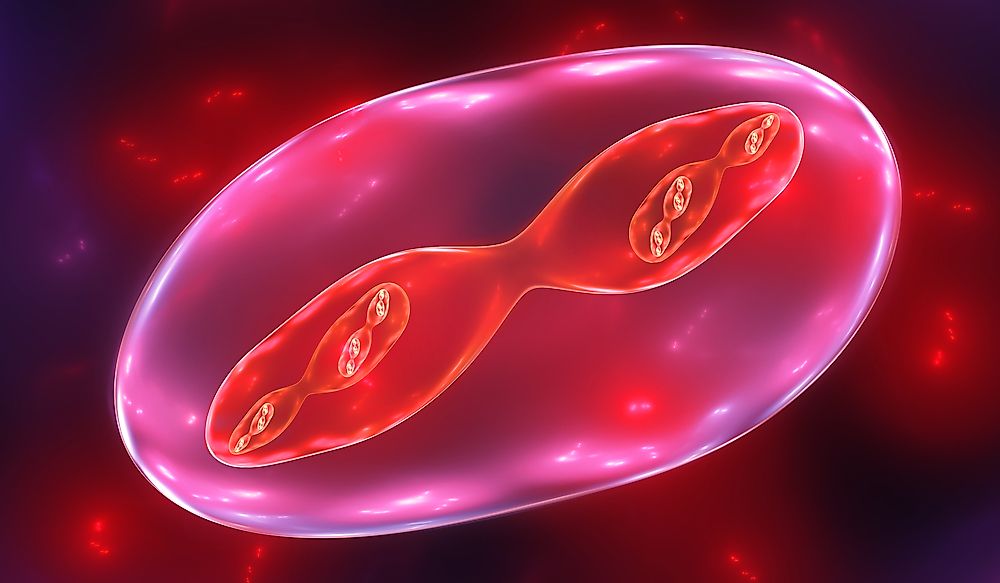What is the Difference Between Mitosis and Meiosis?

Most times people get injuries, complex or simple ones like bruises and, within a period, these injuries heal. This healing process is possible through cell division whereby a single cell divides to form two or more cells and the process continues like a cycle. This process helps living things grow, for example, over 2 trillion cells divide every day in human beings. There are two types of cell division processes, mitosis and meiosis, each of which has distinct characteristics.
Definition
Mitosis: A single cell divide into two genetically identical cells. This process is asexual in nature and the resulting cells have an equal number of chromosomes in each of the diploid cells, each with identical nuclei.
Meiosis: Meiosis is a sexual cell reproduction process whereby a single cell divides its homologous chromosomes equally to form two haploid cells with half the number of chromosomes of the parent cell.
Process of Mitosis
Mitosis occurs in five phases detailing the changes through which the cells go through. These stages are prophase, prometaphase, metaphase, anaphase, and telophase.
In prophase, the chromosomes condense inside the nucleus while centrioles move in pairs to the opposite sides within the nucleus. As this process continues, spindle fibers start forming bridges from one end of the cell to another.
In the next phase, prometaphase, the nucleus that envelops the chromosomes begin to break down and, now without the nucleus, the sister chromatids become free. Long protein chains form across the cells and attach at the kinetochore (protein) which is at the center (centromere).
On the third phase, metaphase, the kinetochore microtubules push and pull the sister chromatids. Chromosomes then line up in preparation for division.
In anaphase, the two sister chromatids divide and move towards the cell’s poles. While the kinetochore holding the microtubules remains attached at the centromere, it starts shortening in length, while the second group of microtubules not attached to the kinetochore start lengthening. The whole cell then begins stretching out and pulling in opposite directions.
Finally, the process enters the telophase stage where each of the identical chromosomes reaches the end poles of the cell while the spindle fibers start disappearing. On each chromosome, a nuclear membrane forms around and a nucleolus forms in each of the nucleus.
Though not considered part of the phases of mitosis, the last process in mitosis is cytokinesis whereby the cell physically splits before the process starts over again.
Process of Meiosis
Meiosis results into two different cells with half the number of chromosomes compared to the parent cell thus increasing the genetic variation. There are two major steps of meiosis; meiosis I and meiosis II. The process of meiosis is significant because reduces the number of chromosomes in an egg or sperm to one set and also allows crossing over of pairs of parental chromosomes.
Meiosis I
Meiosis I has four phases. In the first phase, prophase I, chromosomes appear, the nuclear membrane disappears, and the centrioles begin building spindle fibers to cover the chromosomes. The chromosomes then split into two sister chromatids which the centromeres hold together. This process, therefore, means that there are two sets of sister chromatids (four chromatids) in the two chromosomes. Two non-sister chromosomes cross over as the other two remain. Secondly, in metaphase I, chromosomes line up at the center of the spindle fibers in pairs. The third phase, Anaphase I, beings when equal amounts of chromosomes divide. On the last phase, telophase I, the daughter cells completely divide, the chromosomes disappear, and the nucleic membranes form.
Meiosis II
Meiosis II also has the four phases in meiosis I. First at prophase II, centrioles form spindle fibers as nuclear membrane disappears and chromosome becomes more visible entering into metaphase II where chromosomes again line up in the middle along the spindle fibers. In anaphase II, the chromosomes split into two chromatids each containing a DNA strand then the cell divides. Lastly, the nucleic membrane forms creating four new cells each with distinct DNA. In males, the four cells form sperms while in females, only one cell becomes the egg and the remaining three are re-absorbed into the body
Summary of the Differences
Meiosis occurs in humans, animals, plants, and fungi to produce a new gene after homologs pair. The meiosis process includes two divisions that produce four haploid cells. This process creates sex cells only. Mitosis occurs in all organisms to produce all cells except sex cells. In mitosis, homologs do not pair and division only happens once to produce 2 identical cells.











